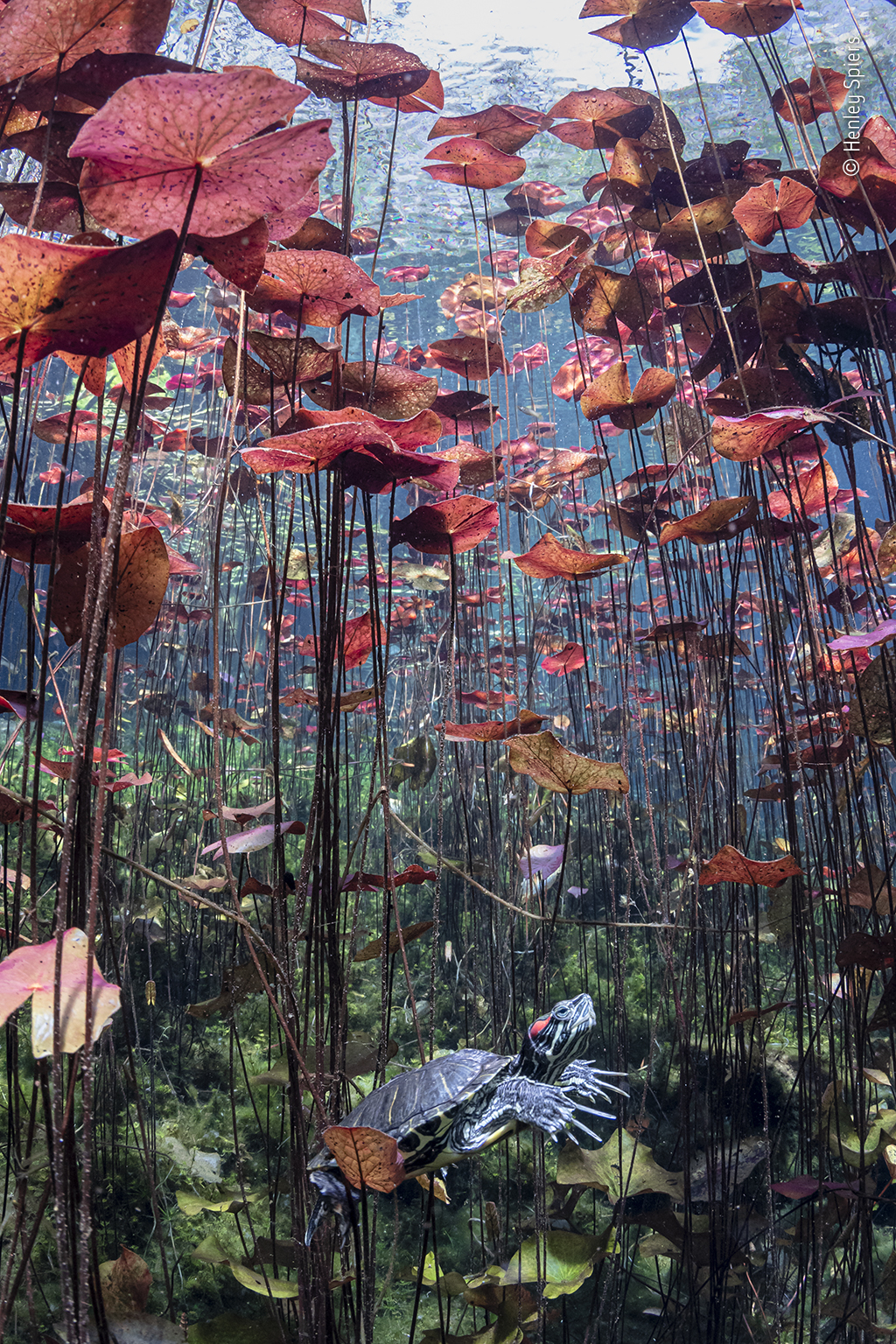Visit the exhibition
Discover the incredible stories of life on our planet through powerful photography and expert insight.
Tickets on sale now.

A red-eared slider turtle swims peacefully among the water lilies in the Aktun Ha cenote in Mexico.
The limestone rock of Mexico's Yucatán Peninsula is dotted by thousands of cenotes, freshwater pools linked by an underground river system. Some cenotes are underground caves while others, where the rock has fallen in, are open air pools.
Henley was spellbound by the marine world below the surface. 'It was only later that I found out this beautiful scene has a more troubling backstory,' he says.
This unique environment is home to many species of flora and fauna including fish and turtles, but what Henley didn't realise at the time is that the slider turtle in his image is not a native Meso-American slider, but a red-eared slider (native to the USA and northeastern Mexico).
It is likely that this turtle was once a pet, or the offspring of a former pet which was then released back into the wild. An increase in wild releases as a result of the booming pet trade has meant that slider turtles have now been successfully introduced to nearly every continent. They are now among the world's 100 most invasive species due to their interbreeding, altering freshwater habitats and carrying pathogens.
How you can help
Discover the incredible stories of life on our planet through powerful photography and expert insight.
Tickets on sale now.

UK / France
Henley is an underwater photographer and writer. Initially a diving instructor, he later fell in love with underwater imagery and became full-time photographer. His words often accompany his images, and he has co-authored two books, Black is the New Blue II and Guide to Cebu. Henley has collaborated with a number of conservation organisations including Blue Marine and the UK's Wildlife Trusts.
Help us harness the power of photography to advance scientific knowledge, spread awareness of important issues and nurture a global love for nature.